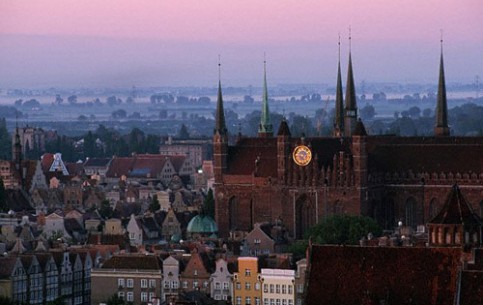
Search:
![]() World Countries
World Countries ![]() Poland
• all objects
Poland
• all objects ![]()
Poland invites its visitors to encounters with culture. Villages and small-time towns offer the opportunity to get away from the bustle of modern life.
Poland lies in the heart of Europe - the geometric centre of the continent is right here. You can find more or less everything in Poland: alpine mountains, wide beaches, clean lakes, deep forests, world-class historic monuments, and friendly people. The climate is temperate, and the people warm and hospitable.The Polish state is over 1 000 years old. In the 16th century Poland was one of the most powerful countries in Europe. The establishment of a Polish state is often identified with the adoption of Christianity by its ruler Mieszko I in 966. Poland became a kingdom in 1025, and in 1569 it cemented a long association with the Grand Duchy of Lithuania by uniting to form the Polish-Lithuanian Commonwealth. The Commonwealth collapsed in 1795. Poland regained its independence in 1918 after World War I but lost it again in World War II, occupied by Nazi Germany and the Soviet Union. Poland lost over six million citizens in World War II, and emerged several years later as a communist country within the Eastern Bloc under the control of the Soviet Union. In 1989 communist rule was overthrown and Poland became what is constitutionally known as the "Third Polish Republic".Culturally travelers can sight-see at many churches, museums, ceramic and traditional basket-making workshops, castle ruins, rural centers and many more. Warsaw - Poland's capital city is one of the most historical and important cities in Europe. It's hard to believe, looking at this city, that it was almost razed to the ground during the Second World War. Warsaw may be embracing new world cuisine, cafe culture, and clubs that never close, but you'll still encounter peasant women selling flowers in its beautifully reconstructed Old Town. Krakow - "cultural capital" of Poland and the country's first capital during its early formative years of the Middle Ages. If offers historical center, countless ancient monuments, the largest European medieval market-place; plenty of magical pubs and cafes; Nowa Huta district - unique entirely planned and built socialist-realist city. Some buildings, for instance St. Adalbert's Church on the Rynek Główny (the Main Market Square) and St. Andrew's Church in ulica Grodzka, date from Poland's early Middle Ages, the 10th and 11th centuries. Close to the Old City, the Royal Castle on Wawel Hill has also been registered on the UNESCO list. Wroclaw proposes a perfect mixture of Gothic and baroque architecture. Gdańsk is one of the most beautiful European cities. Although it was destroyed in World War II, it has been perfectly rebuilt. The city is a good departure point to the many sea resorts along the north coast.Poland has variety of regions with beautiful landscapes and small-scale organic and traditional farms. Just after Finland, Poland has the biggest number of lakes relative to its area worldwide. Travelers can choose different types of activities such as bird watching, cycling or horseback riding. A journey through the Polish countryside gives you a prefect opportunity to enjoy and absorb local knowledge on its landscape and people. There are coastal resorts in Pomeranian and West Pomeranian, with sandy beaches as well as the highest dunes in Europe.Famous Poles include the astronomer Copernicus, the composer Chopin, the scientist Maria Curie-Sklodowska, film-makers Roman Polanski and Krzysztof Kieslowski, and the late Pope, John-Paul II.
Related objects
 |
|
 |
|
 |
|
 |
|
 |
|
 |
|
 |
|
 |
|
 |
|
 |
|
 |
|
 |
|
 |
|
 |
|
 |
|
 |
|
 |
|
 |
|
 |
|
 |
|
 |
|
 |
|
 |
|
 |
|
 |
|





